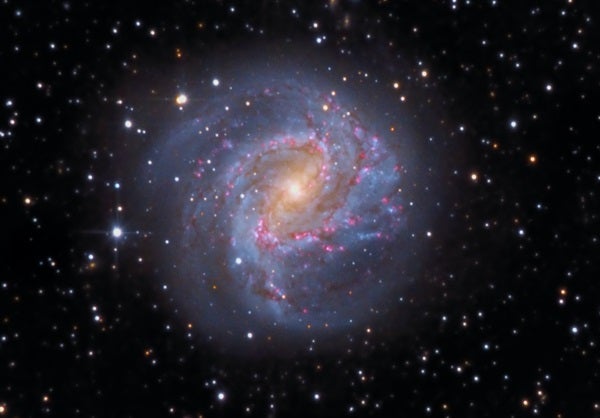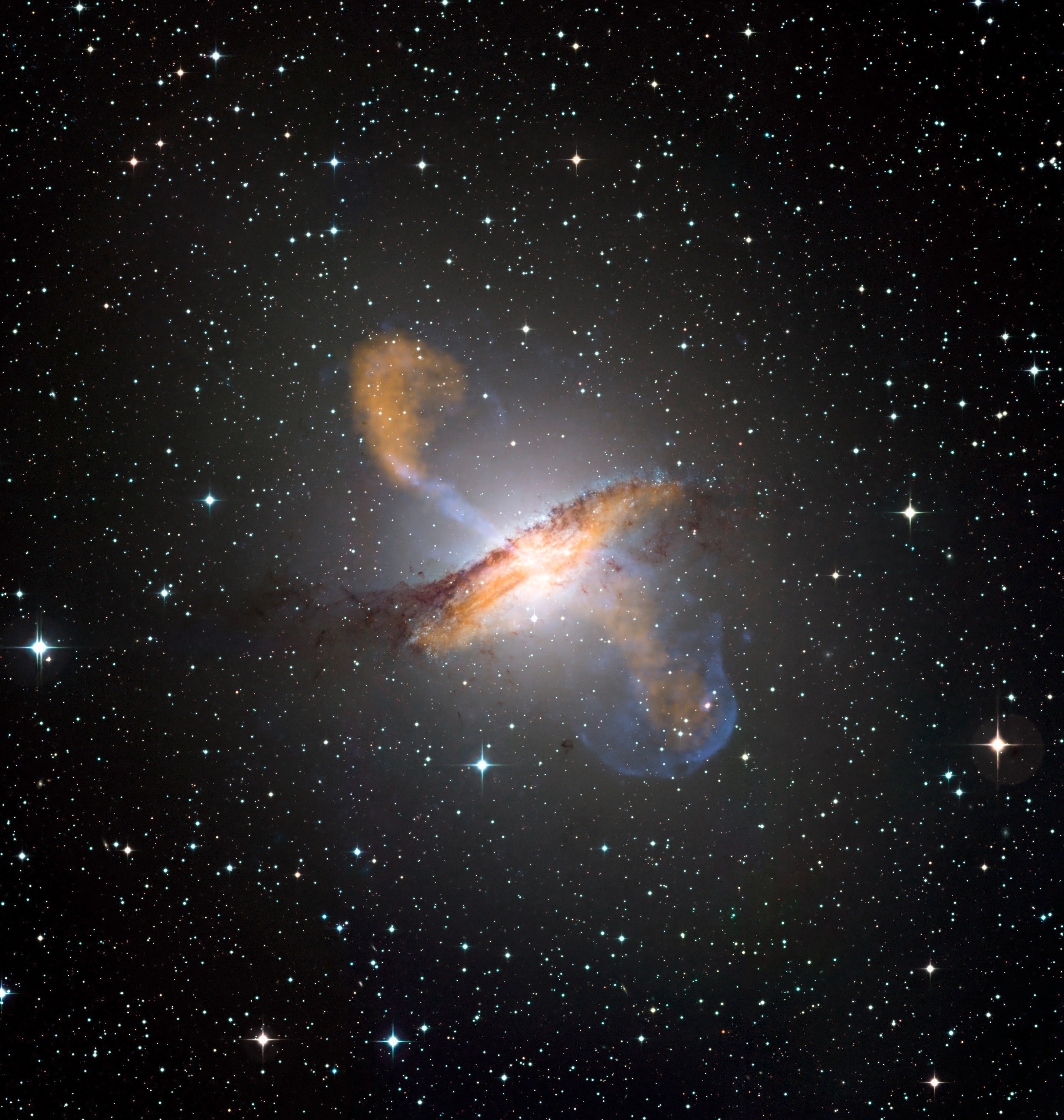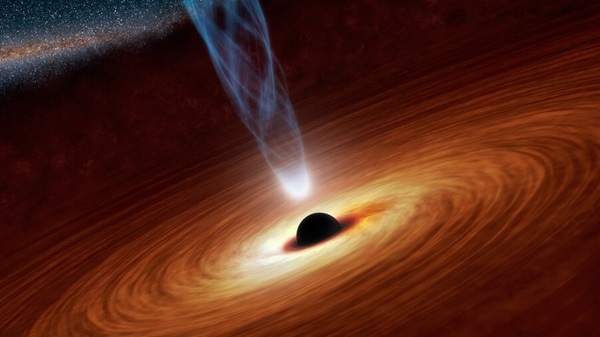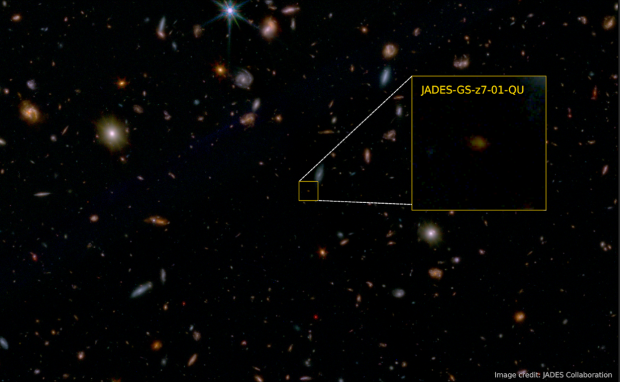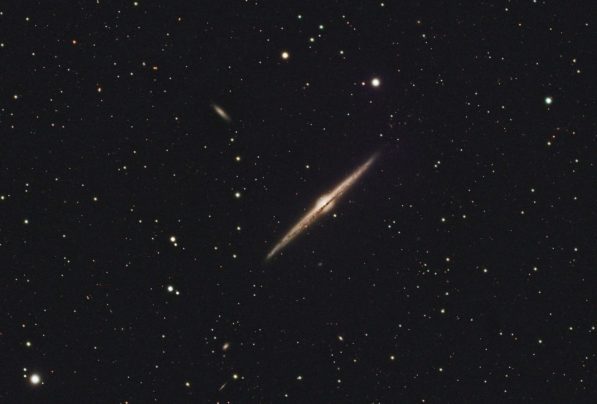The Southern Pinwheel Galaxy is a celestial treat for those who can see it. This galaxy measures 14′ by 13′. M83 also is bright at magnitude 7.5, making it the eighth-brightest galaxy in the sky. Its distance certainly plays a factor in both of these traits; the Southern Pinwheel Galaxy lies a mere 14.7 million light-years away.
Using a ½-inch refractor, French astronomer Nicolas Louis de Lacaille discovered M83 in 1752. Charles Messier added it to his now-famous catalog in 1781.
M83 is the second-brightest member of a collection of more than a dozen galaxies called the Centaurus A/M83 group. As you may have guessed, the other notable (and slightly brighter) object in this group is Centaurus A (NGC 5128; see #1). Gravitational interaction in the past billion years between M83 and the nearby dwarf irregular galaxy NGC 5253 has triggered considerable star formation in each.
Despite so many galaxies in one area, M83 lies in a region of the night sky short on bright stars. The nearest reasonably bright star, 1 Centauri, glows at magnitude 4.2 and lies 3.7° south-southeast. Alternatively, you can find M83 9° northwest of magnitude 2.1 Menkent (Theta [θ] Centauri). From a dark site, the galaxy is pretty easy to sweep up using binoculars.
The Southern Pinwheel Galaxy appears nearly face-on, so you’ll see its spiral structure through telescopes with apertures as small as 6 inches. The core is petite and round, and the bar extends to the northeast and southwest. Through 12-inch and larger scopes, you’ll see large clumps of stars and star-forming regions along its arms.
Make sure to explore Astronomy’s full list of 101 cosmic objects you must see. New entries will be added each week throughout 2022.
To get the latest astronomical news and observing content delivered directly to your door, subscribe to Astronomy magazine today!

